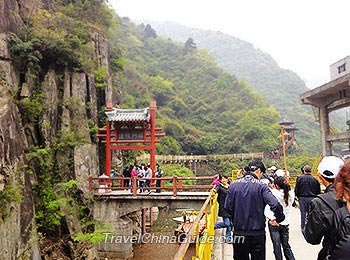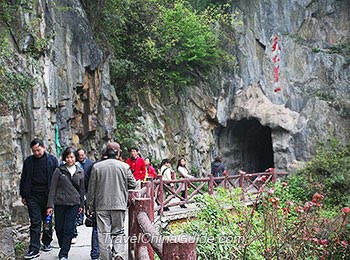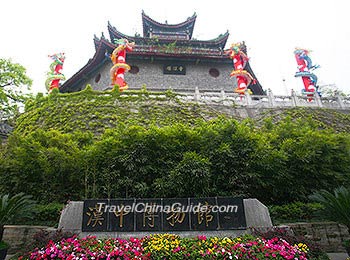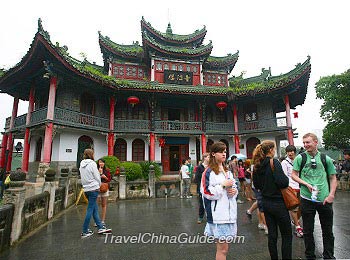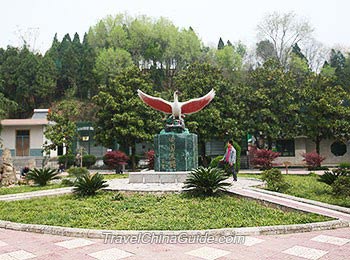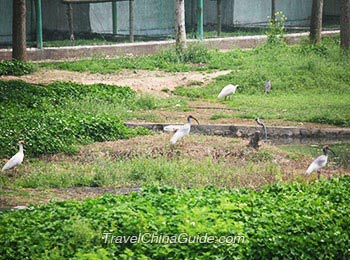Hanzhong Travel Guide
Hanzhong Facts
Chinese Name: 汉中 (hàn zhōng)
Population: 3,437,000
Area: 27,246 square kilometers (10,520 square miles)
Location: in the southwest of Shaanxi Province, northwest China
Administrative Division: 2 districts (Hantai, Nanzheng); 9 counties (Chenggu, Yangxian, Xixiang, Mianxian, Ningqiang, Lueyang, Zhenba, Liuba, Foping)
Area Code: 0916
Zip Code: 723000
GDP (2019): CNY 154.759 billion (USD 22.432 billion)
Featuring Historical Sites and Rapeseed Flower Sea
Located in the southwest of Shaanxi Province, the city lies to the south of the Qinling Mountains, to the north of the Daba Mountains with the Hanzhong Basin in the center. It is bounded on the southwest by Gansu and Sichuan provinces, and adjacent to Xi'an in the northeast. Known as a famous historical and cultural city in China, Hanzhong has witnessed more than 4,000 years of history. Many historical sites of the Han Dynasty (202 BC – 220) and the Three Kingdoms (220 - 280) are preserved, such as the palace of Liu Bang, the first emperor of the Han Dynasty, which is now transformed into the Hanzhong Museum and the Wuhou Temple for commemorating the famous strategists of the Three Kingdoms period, Zhuge Liang.
Hanzhong is also rich in plants especially medicinal herbs and animal resources due to high forest coverage. Giant pandas, golden monkeys, Crested Ibis and antelopes are extremely rare animals living in Hanzhong. Another highlight of Hanzhong travel is a large scale of rapeseed flowers. In March and April, the golden rapeseed flowers are blooming all over the mountains and plains. The best shooting and viewing places are Nanzheng, Mianxian and Yangxian counties which have the most spectacular and concentrated rapeseed flower fields.
Hanzhong Attractions - Things to Do
Shimen Plank Road Scenic Area is a famous attraction in the northeast suburb of the city. It is famous for Shimen Plank Road, Shimen Tunnel which was the first man-made tunnel in the world, and for Shimen Dam from where you can enjoy the gripping panorama of Baohe River and the riverside natural sceneries.
|
|
Hanzhong Museum (Ancient Hantai)
|
|
Wuhou Temple (Memorial Temple of Marquis Wu)
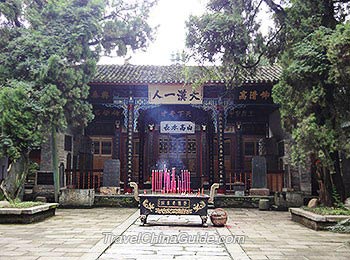 |
| Wuhou Temple |
Located in Raojiaying Village, Chenggu County, the tomb is the final resting place of Zhang Qian (164-114 BC) - an outstanding diplomat and explorer during the Western Han Dynasty (202BC-9 AD), and the pioneer of the world-famous Silk Road. The tomb is 30 kilometers (19 miles) east of central downtown.
About 158 kilometers (100 miles ) northeast of the city, Foping National Nature Reserve is also the home to cute pandas and other rare animals and plants. In addition to the black-white pandas we see, the brown giant panda was also once found here. Because of the complex ecosystem which has cultivated various kinds of animals and plants, this reserve is described as the “Natural Animal and Plant Gene Base.”
About 200 km (124 mi) from city center, Qingmuchan Ancient Town used to be a vital trading and military post in ancient China and now has become a famous attraction site for its well-preserved traditional blocks, old buildings, temples and ancestral halls. Huilongchang Old Street, Qingmuchuan Furen Middle School, and Weifutang’s Residence are the must-see sites here.
Crested Ibis Nature Reserve
Located in northern Yangxian County, this national nature reserve was established to protect a rare bird, crested ibis from extinction. The reserve has the only rescue and care center for the crested ibis in China. The number of birds has increased from the initial seven ones in the wild to five hundred.
|
|
Tour Planning
Hanzhong Culture Appreciation: to visit Ancient Hantai, Baoxie Plank Road, Wuhou Memorial Temple.
Popular Hiking Routes around Hanzhong
How to Get to Hanzhong
Hanzhong Chenggu Airport is 17 kilometers (11 miles) southwest of the city proper, operating flights from to/from Beijing, Shanghai, Guangzhou, Shenzhen, Hangzhou, Xiamen, Nanjing, Urumqi, Qingdao, Kunming, Lanzhou, Yinchuan, Nantong, Foshan... A new airport will be built in Mianxian County in the near future. There are also two trains (one from Xi'an Railway Station and the other from Xi'an South Railway Station) to Hanzhong Railway Station in the city, which takes 7-8 hours. Most people go there by bus through Expressway, which is cheap and fast. The express bus can be found both in Xi'an Chengnan (South) Coach Station and Chengxi (West) Coach Station. The journey is 3.5 hours.
Thanks for the completion of Xi-Han Expressway, the distance between the two cities is halved, only about three hours needed. Buses to city proper can be found in Xi'an West Bus Station in No.92, Zaoyuan Road (East). Visitors can get buses to the districts and counties from the Xi'an South Bus Station (Mingdemen Bus Station) in Zhuque Dajie. Terminal in the other end is the Hanzhong Express Bus Station in Xinqiao Shizi (Intersection).![]() See more Xi'an - Hanzhong Train
See more Xi'an - Hanzhong Train
Weather
Situated in the transition area between warm temperate zone and subtropical zone, the area has moderate and humid weather without torrid a summer. The winter wind current coming form North China is blocked by the Qinling Mountains, so winter is relatively warmer. The rainy season of Hanzhong weather usually appears during June and lasts until September. Any season is a good season to visit the city.
Hanzhong Travel Tips
![]() History: The city gained its name from the Han River. As early as 2,400 years ago, a shire was established by the Qin Kingdom during the Warring States Period (476BC-221BC). It is the birthplace of the Han Dynasty (206BC-220AD).
History: The city gained its name from the Han River. As early as 2,400 years ago, a shire was established by the Qin Kingdom during the Warring States Period (476BC-221BC). It is the birthplace of the Han Dynasty (206BC-220AD).
